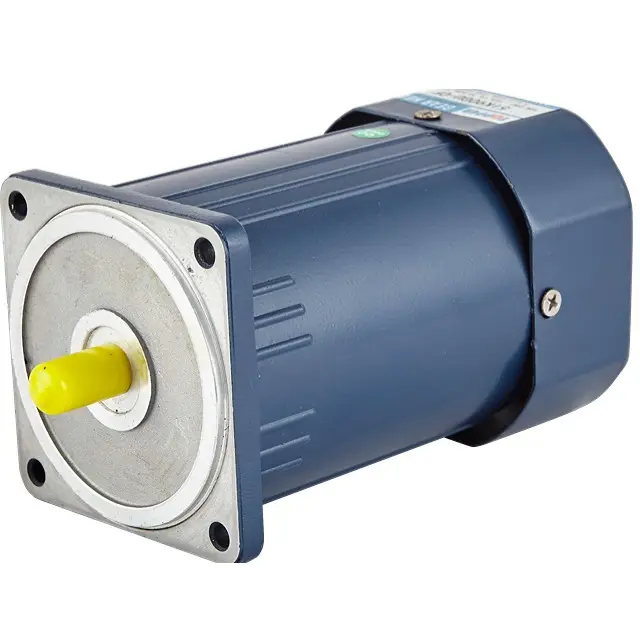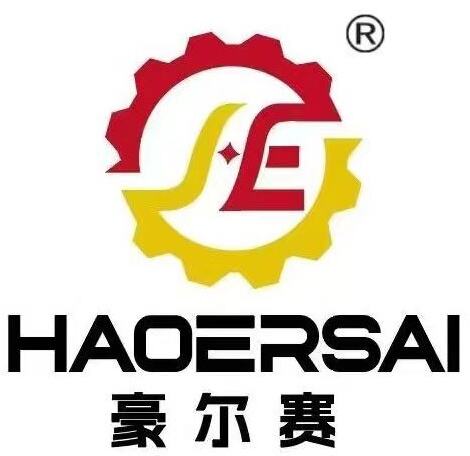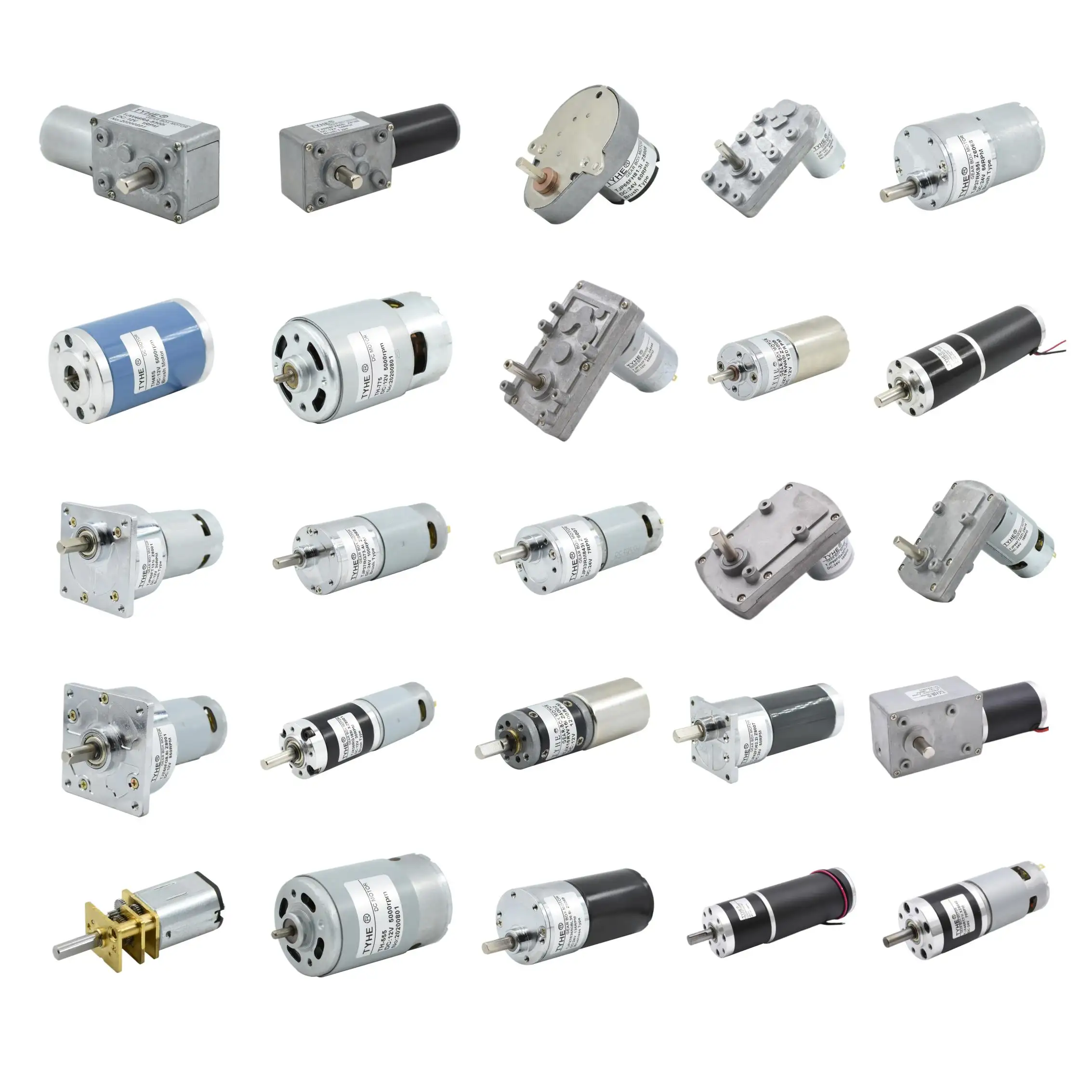लघु मोशन नियंत्रण की शक्ति की समझ
माइक्रो गियर्ड मोटर्स ने औद्योगिक स्वचालन और सटीक इंजीनियरिंग के क्षेत्र में क्रांति ला दी है। ये संकुचित पावरहाउस उन्नत गियर तंत्र को सटीक मोटर नियंत्रण के साथ जोड़ते हैं, जिससे न्यूनतम संभव आकार में अत्यधिक प्रदर्शन प्राप्त होता है। जैसे-जैसे उद्योग अधिक स्मार्ट और दक्ष संचालन की ओर विकसित हो रहे हैं, माइक्रो गियर्ड मोटर्स इस परिवर्तन के अग्रिम मोर्चे पर खड़े हैं, जो विविध अनुप्रयोगों में बेमिसाल स्तर के स्वचालन को सक्षम करते हैं।
चिकित्सा उपकरणों से लेकर रोबोटिक्स तक, और ऑटोमोटिव सिस्टम से लेकर एयरोस्पेस घटकों तक, सूक्ष्म गियर मोटर्स आधुनिक स्वचालित प्रणालियों की मूलभूत इकाइयाँ हैं। बंद स्थानों में सटीक नियंत्रण प्रदान करने, लगातार टोक़ बनाए रखने और दक्षता से संचालन करने की उनकी क्षमता आज के निर्माण और तकनीकी परिदृश्य में उन्हें अपरिहार्य बनाती है।
मुख्य घटक और डिज़ाइन उत्कृष्टता
उन्नत गियर ट्रेन वास्तुकला
सूक्ष्म गियर मोटर्स का आधार उनकी सूक्ष्मता से डिज़ाइन की गई गियर ट्रेन प्रणाली में निहित है। ये सटीक रूप से निर्मित घटक एक साथ सामंजस्यपूर्ण ढंग से काम करते हुए उच्च-गति, कम टोक़ वाले मोटर आउटपुट को नियंत्रित, उच्च टोक़ यांत्रिक शक्ति में परिवर्तित करते हैं। आधुनिक सूक्ष्म गियर मोटर्स सिंटर्ड धातु और इंजीनियर्ड पॉलिमर जैसी उन्नत सामग्री का उपयोग करते हैं, जो भार और शोर को न्यूनतम करते हुए टिकाऊपन सुनिश्चित करते हैं।
माइक्रो गियर मोटर्स में गियर अनुपात का चयन उनकी प्रदर्शन विशेषताओं को निर्धारित करने में एक महत्वपूर्ण भूमिका निभाता है। इंजीनियर विभिन्न विन्यासों में से चयन कर सकते हैं, जिनमें सरल स्पर गियर व्यवस्था से लेकर अधिक जटिल ग्रहीय गियर प्रणाली तक शामिल है, जहाँ प्रत्येक विशिष्ट अनुप्रयोगों और प्रदर्शन आवश्यकताओं के लिए अनुकूलित होता है।
मोटर एकीकरण और नियंत्रण प्रणाली
था इलेक्ट्रिक मोटर माइक्रो गियर मोटर्स के घटक को सघन रूप कारक में अधिकतम दक्षता प्राप्त करने के लिए कठोर डिज़ाइन अनुकूलन से गुजरना पड़ता है। उन्नत ब्रशलेस डीसी मोटर्स अब तेजी से आम हो रहे हैं, जो पारंपरिक ब्रश मोटर्स की तुलना में उत्कृष्ट नियंत्रण और लंबी आयु प्रदान करते हैं। जटिल इलेक्ट्रॉनिक नियंत्रण प्रणालियों के एकीकरण से सटीक गति नियमन, स्थिति नियंत्रण और टोक़ प्रबंधन संभव होता है।
आधुनिक सूक्ष्म गियर मोटर्स अक्सर एम्बेडेड सेंसर और फीडबैक तंत्र को शामिल करते हैं, जो संचालन पैरामीटर्स की वास्तविक समय में निगरानी और समायोजन की अनुमति देते हैं। इस स्तर का नियंत्रण सुनिश्चित करता है कि भार की विभिन्न स्थितियों और पर्यावरणीय कारकों के आधार पर इष्टतम प्रदर्शन बना रहे।

औद्योगिक अनुप्रयोगों में प्रदर्शन लाभ
सटीकता और दोहराव
सूक्ष्म गियर मोटर्स का सबसे महत्वपूर्ण लाभ उनकी सटीक और दोहराव योग्य गति नियंत्रण प्रदान करने की क्षमता है। स्वचालित असेंबली लाइनों में, ये मोटर्स माइक्रोमीटर में मापी गई सटीकता के साथ घटकों के सुसंगत स्थान को सुनिश्चित करते हैं। उच्च-रिज़ॉल्यूशन एन्कोडर और परिष्कृत गियर कमी प्रणाली के संयोजन से अत्यंत सूक्ष्म स्थिति नियंत्रण संभव होता है, जो अर्धचालक निर्माण और चिकित्सा उपकरण असेंबली में अनुप्रयोगों के लिए आवश्यक है।
सूक्ष्म गियर मोटर्स की अंतर्निहित स्थिरता, जो बिजली बंद होने पर भी स्थिति बनाए रखने की क्षमता के साथ जुड़ी होती है, उन्हें सटीक स्थिति और धारण टोक़ की आवश्यकता वाले अनुप्रयोगों के लिए आदर्श बनाती है। यह विशेषता रोबोटिक्स और स्वचालित उपकरण परिवर्तकों में विशेष रूप से मूल्यवान है।
ऊर्जा की कुशलता और ऊष्मा प्रबंधन
आधुनिक सूक्ष्म गियर मोटर्स को ऊर्जा दक्षता को प्राथमिकता में रखकर डिज़ाइन किया गया है। इष्टतम गियर ट्रेन घर्षण के माध्यम से शक्ति हानि को कम से कम करते हैं, जबकि उन्नत मोटर डिज़ाइन विद्युत ऊर्जा के यांत्रिक उत्पादन में अधिकतम रूपांतरण सुनिश्चित करते हैं। यह दक्षता न केवल संचालन लागत को कम करती है बल्कि तापमान-संवेदनशील अनुप्रयोगों में परिशुद्धता बनाए रखने के लिए महत्वपूर्ण ऊष्मा उत्पादन को भी कम करती है।
नवीन शीतलन समाधान और तापीय प्रबंधन तकनीकों को नवीनतम सूक्ष्म गियर मोटर डिज़ाइन में एकीकृत किया गया है, जो चरम प्रदर्शन स्तर पर निरंतर संचालन की अनुमति देता है। यह तापीय स्थिरता निरंतर सटीकता सुनिश्चित करती है और घटकों के जीवनकाल को बढ़ाती है।
एकीकरण की चुनौतियाँ और समाधान
स्पेस ऑप्टिमाइज़ेशन की रणनीतियाँ
सीमित स्थानों में माइक्रो गियर मोटर्स के उपयोग के लिए माउंटिंग विकल्पों और कनेक्शन इंटरफेस पर सावधानीपूर्वक विचार करने की आवश्यकता होती है। इंजीनियरों को प्रदर्शन आवश्यकताओं को स्थानिक सीमाओं के साथ संतुलित करना चाहिए, साथ ही रखरखाव और समायोजन के लिए पर्याप्त पहुँच सुनिश्चित करनी चाहिए। उन्नत CAD मॉडलिंग और सिमुलेशन उपकरण जटिल यांत्रिक प्रणालियों के भीतर मोटर स्थान और एकीकरण को अनुकूलित करने में सहायता करते हैं।
मॉड्यूलर माउंटिंग समाधानों और मानकीकृत इंटरफेस के विकास ने एकीकरण प्रक्रिया को सरल बना दिया है, जिससे अधिक लचीले और कुशल प्रणाली डिजाइन की अनुमति मिलती है। इस मानकीकरण से रखरखाव और प्रतिस्थापन प्रक्रियाओं में भी आसानी होती है।
पर्यावरण संरक्षण और विश्वसनीयता
विविध औद्योगिक वातावरण में संचालन करने से सूक्ष्म गियर मोटर्स के लिए अद्वितीय चुनौतियाँ उत्पन्न होती हैं। धूल, नमी और विद्युत चुम्बकीय हस्तक्षेप से सुरक्षा विश्वसनीय संचालन बनाए रखने के लिए महत्वपूर्ण है। आधुनिक डिज़ाइन में बंद आवास, विशेष स्नेहक और विद्युत चुम्बकीय शील्डिंग शामिल की जाती हैं ताकि प्रतिकूल परिस्थितियों में भी निरंतर प्रदर्शन सुनिश्चित किया जा सके।
गुणवत्ता नियंत्रण उपाय और कठोर परीक्षण प्रोटोकॉल सूक्ष्म गियर मोटर्स की विश्वसनीयता को उनकी निर्धारित संचालन सीमा के भीतर सत्यापित करते हैं। इसमें दीर्घकालिक प्रदर्शन और टिकाऊपन को सत्यापित करने के लिए त्वरित जीवन परीक्षण और पर्यावरणीय तनाव परीक्षण शामिल हैं।
भविष्य के रुझान और नवाचार
स्मार्ट एकीकरण और उद्योग 4.0
स्मार्ट सुविधाओं और कनेक्टिविटी विकल्पों के एकीकरण के साथ सूक्ष्म गियर मोटर्स का विकास जारी है। आंतरिक नैदानिक क्षमताएं और भविष्यवाणी रखरखाव एल्गोरिदम अप्रत्याशित बंद होने से बचाव और रखरखाव कार्यक्रमों को अनुकूलित करने में मदद करते हैं। आईओटी कनेक्टिविटी के एकीकरण से दूरस्थ निगरानी और नियंत्रण संभव होता है, जो इंडस्ट्री 4.0 सिद्धांतों के अनुरूप है।
गियर घटकों के 3D मुद्रण और सुधरी हुई सतह उपचार जैसी उन्नत विनिर्माण तकनीकें सूक्ष्म गियर युक्त मोटर डिज़ाइन में संभव की सीमाओं को आगे बढ़ा रही हैं। ये नवाचार मोटर्स की भावी पीढ़ियों में अधिक कुशलता और विश्वसनीयता का वादा करते हैं।
सतत डिजाइन और विनिर्माण
पर्यावरणीय मापदंड अब धीरे-धीरे सूक्ष्म गियर युक्त मोटर विकास को प्रभावित कर रहे हैं। निर्माता स्थायी सामग्री और उत्पादन प्रक्रियाओं पर ध्यान केंद्रित कर रहे हैं, साथ ही ऊर्जा दक्षता और पुनर्चक्रण क्षमता में सुधार कर रहे हैं। अधिक पर्यावरण-अनुकूल डिज़ाइन की ओर रुझान चिकनाई तेल और पैकेजिंग सामग्री के चयन तक फैला हुआ है।
बायोडिग्रेडेबल घटकों और पर्यावरण के अनुकूल विनिर्माण प्रक्रियाओं में शोध से संकेत मिलता है कि प्रदर्शन या विश्वसनीयता के नुकसान के बिना स्थायी सूक्ष्म गियर युक्त मोटर उत्पादन के लिए एक आशाजनक भविष्य है।
अक्सर पूछे जाने वाले प्रश्न
एक सूक्ष्म गियर युक्त मोटर का आम जीवनकाल क्या होता है?
सूक्ष्म गियर मोटर्स का जीवनकाल आमतौर पर लगातार संचालन के 3,000 से 10,000 घंटे के बीच होता है, जो अनुप्रयोग, संचालन की स्थितियों और रखरखाव प्रथाओं पर निर्भर करता है। उचित देखभाल और निर्दिष्ट संचालन मापदंडों के भीतर, कई इकाइयाँ इन अनुमानों को काफी हद तक पार कर सकती हैं।
समय के साथ सूक्ष्म गियर मोटर्स परिशुद्धता बनाए कैसे रखते हैं?
उच्च-गुणवत्ता वाली सामग्री, सटीक निर्माण सहिष्णुता और उचित स्नेहन प्रणालियों के संयोजन के माध्यम से परिशुद्धता बनाए रखी जाती है। मोटर के सेवा जीवन के दौरान लगातार प्रदर्शन सुनिश्चित करने में स्नेहन जाँच और गियर के क्षरण की निगरानी सहित नियमित रखरखाव सहायता करता है।
सूक्ष्म गियर मोटर का चयन करते समय किन कारकों पर विचार किया जाना चाहिए?
मुख्य चयन मापदंडों में आवश्यक टॉर्क आउटपुट, गति सीमा, ड्यूटी चक्र, पर्यावरणीय स्थितियाँ, स्थान सीमाएँ और नियंत्रण आवश्यकताएँ शामिल हैं। अतिरिक्त विचारों में बिजली आपूर्ति विनिर्देश, तापीय प्रबंधन की आवश्यकताएँ और मौजूदा प्रणालियों या नियंत्रणों के साथ इंटरफ़ेस आवश्यकताएँ शामिल हैं।

